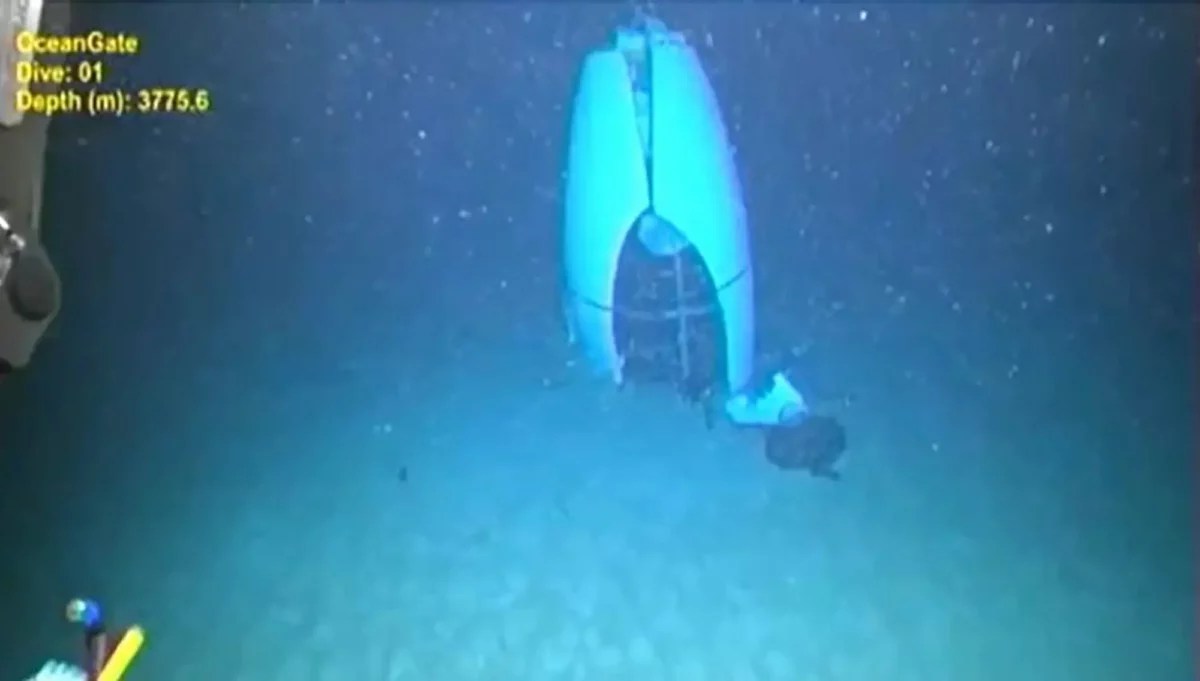
Posted on 09/17/2024 9:09:44 PM PDT by Red Badger
Watery Grave
During a public Coast Guard hearing on Monday, grim new details of the Titan submersible disaster came to light.

It's been 15 months since the tiny vessel descended to visit the Titanic shipwreck 12,500 feet below the surface of the Atlantic. But somewhere along its journey, the Titan submersible abruptly imploded, killing all five people on board.
Well over a year later, the US Coast Guard revealed the first image of the wreck in the form of a screenshot of a video recorded by a remotely operated deep-sea drone.
The vehicle spotted the Titan's tail cone and other related debris on June 22, four days after it disappeared and a day before the US Coast Guard officially declared the submersible had been lost.
The image is an eerie reminder of the danger the crew was in, at least in part as the result of former OceanGate CEO Stockton Rush repeatedly ignoring safety concerns and using legal threats to silence his critics over the years.
Rush was one of the passengers, ironically, who perished when the submersible imploded.
Limited Shell Life
The hearing was the first time we've heard from officials about what exactly went wrong since the disaster, as the New York Times reports. The US Coast Guard discovered a shocking number of problems, including 70 equipment-related issues in 2021 and 48 additional ones in 2022.
Less than a month before it imploded, the Titan was found "partially sunk" days after being set off as part of a test. Days before its fatal accident, passengers on a separate mission were slammed against its wall as it resurfaced.
Experts have since pointed out several design flaws, some of which may have been implemented by OceanGate as cost-cutting measures, including its unusual pill-like shape, foregoing the industry standard sphere shape.
Rush also once bragged about using expired carbon fiber, which was bought from troubled aerospace contractor Boeing. Experts have since lambasted the material as a poor choice for a deep sea vessel, because carbon fiber weakens over time.
We still don't exactly know what caused the submersible's hull to implode. But Monday's hearing was only the start of two weeks of public proceedings, suggesting we're likely to find out — and potentially see — a lot more grisly details.
The only one I really feel sorry for was the 19-year-old kid.
He didn’t want to go in the first place, but since it was Father’s Day he wanted to please his dad.................
Military submarines aren’t made out of carbon fiber......there a reason for that.
I imagine the stress fracture point for carbon fiber is waaaay low.................
I think the whole problem is carbon fiber is TOO rigid.....and I suspect proper inspections weren’t being done between dives.
Where I used to work we had a whole department that used multiple processes dedicated to inspecting parts for cracks and flaws. I doubt anything like that was being done.
How do you do NDT of Carbon Fiber?
X-ray?.....................
“advanced NDT techniques such as ultrasonic testing of carbon fiber allow analysts to detect internal cracking and other indications on a volumetric level, while eddy current testing can conform to the thin profiles of carbon fiber on a surface and subsurface level.”
The vid I saw of the hull being built was using a simple lay-up technique.
Monocoqued carbon fiber using heat and pressure to activate the resin results in extremely strong assemblies.
I’ve broken lots of laid-up carbon windsurfing and biking equipment. It all stopped when it started to come as a heat and pressure molded assemblies.
Out of date carbon fiber from Boeing?!?
Yeah, THATS THE TICKET!
Carbon fiber is strong in tension, weak in compression.
Using it in a pressurized aircraft, such as a Boeing 787, is playing to its strengths.
Using it in a submarine hull, exposed to EXTERNAL pressure, where it is weakest, is just foolish.
Using “expired” fiber for a critical manned structure, strikes me as being criminally negligent.
The photo shows that the bubble-like transparent window in the bow of the submersible is missing. I suspect that a structural failure began in the seam of the bubble, possibly causing a crack in the window that resulted in a catastrophic implosion within a few milliseconds.
12,500 ft/ 33 = 378.79 atmospheres, almost four times the surface pressure of Venus.
Mercifully, death would have been within a millisecond for the passengers.
—
I agree, they didn’t feel a thing.
The window manufacturer would not guarantee the window’s integrity at the depth that they were using it, but they used it anyway........................
Disclaimer: Opinions posted on Free Republic are those of the individual posters and do not necessarily represent the opinion of Free Republic or its management. All materials posted herein are protected by copyright law and the exemption for fair use of copyrighted works.